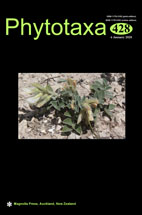Abstract
Examination of algal assemblages from aerial environments around the globe, especially those from pseudoaerial habitats found on moistened rocks underneath waterfalls or around springs and seeps, reveals the presence of unique diatom floras. Yet, diatom assemblages from northern regions like Iceland remain understudied, especially those from the volcanic rock outcrops and boulders that create euaerial habitats where biota receive moisture from the atmosphere or the rock itself. During the summers of 2013 and 2015, we examined the biodiversity of mostly euaerial, but also pseudoaerial, diatom assemblages collected from volcanic rock outcrops or large boulders on the landscape from southwestern Iceland. We used light and scanning electron microscopy to document the biodiversity of common, smaller, new, or interesting specimens, such as Humidophila and Eunotia. We describe one new Humidophila species, H. eldfjallii sp. nov., with triundulate valve margins and include information on another unidentified taxon, Humidophila sp. 1, naviculoid in shape with tapering to rounded ends, continuous striae through the length of the valve, and a circular central area. We formally transfer Diadesmis contenta var. biceps to Humidophila biceps. To correct the nomenclature, we recognized Humidophila parallela at the species level. Relative abundance estimates of diatom populations provided further characterization of the assemblages on these habitats. Humidophila taxa, especially H. gallica dominated the diverse diatom flora. We discuss adaptations for survival with access to mostly atmospheric water. The diatom flora described here adds to the flora for this region, highlights the diversity of diatom assemblages that can inhabit euaerial environments, and provides evidence of adaptive success of diatoms in extreme habitats with limited moisture and nutrients.

